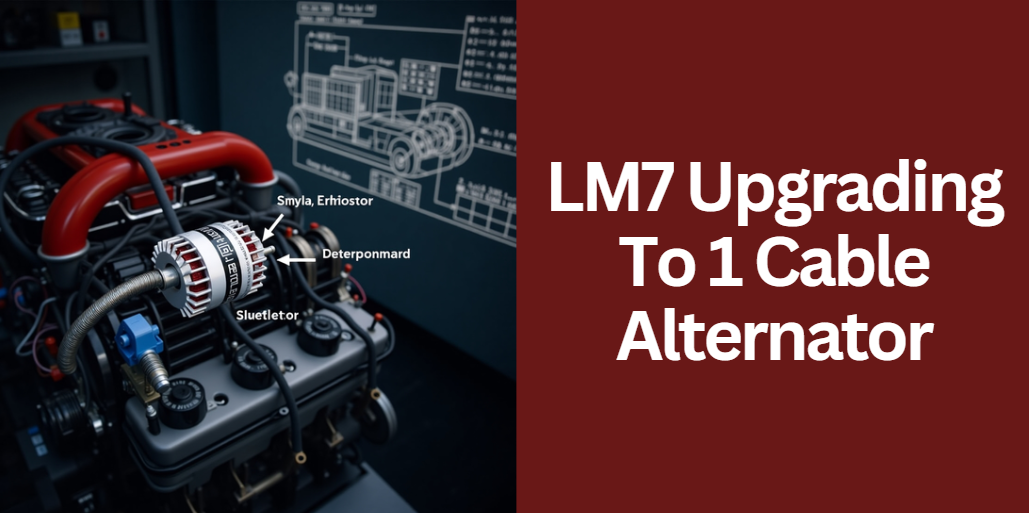In today’s highly competitive industrial landscape, precision and reliability are paramount. The UKM 560-1000-2 is a cutting-edge measurement tool designed to deliver highly accurate results, enhancing operational efficiency and minimizing errors in manufacturing and assembly processes.
The purpose of this guide is to provide an in-depth, easy-to-understand resource that covers all aspects of UKM 560-1000-2, helping professionals gain a complete understanding of its benefits and practical applications.
By examining its features, technical details, and diverse industry uses, this guide aims to empower engineers, technicians, and industrial managers to make informed decisions that improve productivity and quality assurance.
What is UKM 560-1000-2?
The UKM 560-1000-2 is a high-precision measurement tool engineered for professional industrial use. It plays a vital role in ensuring that production components are manufactured and assembled with stringent accuracy standards.
This tool is not only known for its exceptional measurement capabilities but also for its robust construction and ease of operation. Its digital interface and advanced calibration system allow both experienced professionals and newcomers to obtain reliable, repeatable measurements across a wide range of applications.
This instrument is designed to minimize human error and significantly reduce the need for costly rework. The reliability of the UKM 560-1000-2 ensures that every component—whether part of an engine, a circuit board, or an aerospace structure—meets the highest quality benchmarks, making it indispensable in fields where precision is critical.
Historical Background and Evolution
The development of the UKM 560-1000-2 is rooted in continuous innovation driven by industrial demands for precision and efficiency. Originally introduced in the early 2000s, earlier models laid the foundation for a tool that could handle rigorous industrial environments with basic measurement capabilities. Over time, advancements in materials, digital interfacing, and calibration technology led to the evolution of the modern UKM 560-1000-2.
A historical timeline illustrates this journey:
| Year/Period | Key Developments | Impact on Precision & Durability |
|---|---|---|
| Early 2000s | Initial version with basic measurement accuracy | Established a functional baseline |
| Mid 2000s | Upgraded materials and enhanced structural design | Improved durability and operational lifespan |
| Late 2010s | Integration of digital interfaces and auto-calibration | Elevated precision and user accessibility |
These developments illustrate how industry pressures and technological advancements have continually refined UKM 560-1000-2, making it the reliable measurement instrument it is today.
Technical Specifications and Design Features
The technical prowess of the UKM 560-1000-2 lies in its sophisticated design and high-quality components. The instrument integrates a range of advanced features that work in harmony to provide accurate and consistent measurements.
Core Components and Functionality
At its core, the UKM 560-1000-2 utilizes state-of-the-art sensors and calibration systems designed to capture minute differences in dimensions with an accuracy down to ±0.01 mm (example value). Its digital interface is not only intuitive but also allows for real-time monitoring and immediate adjustments, ensuring optimal performance during every measurement cycle.
Specifications Table
Below is a table summarizing the key specifications of the UKM 560-1000-2:
| Specification | Details |
|---|---|
| Measurement Accuracy | ±0.01 mm (example value) |
| Operating Range | 560 – 1000 units (context-dependent; e.g., watts, mm) |
| Material | High-grade alloy steel with corrosion-resistant coating |
| Digital Interface | Intuitive display with auto-calibration capability |
| Durability | Engineered to withstand harsh industrial environments |
| Calibration System | Integrated for consistent, repeatable measurements |
Innovative Design Elements
The UKM 560-1000-2 features an ergonomic design that promotes both functionality and user comfort. Its compact layout, combined with a rugged construction, makes it ideally suited for prolonged industrial use. Furthermore, advanced safety mechanisms are built into the system to protect both the user and the equipment during high-precision operations.
Applications and Industries
The versatility of the UKM 560-1000-2 is one of its defining strengths, as it seamlessly adapts to a myriad of industrial applications.
Automotive Industry
In automotive engineering, the UKM 560-1000-2 is vital for calibrating engine components and sensors. Precise measurements ensure that every part fits perfectly, which is crucial for both performance and safety.
For example, during engine assembly, technicians use the tool to verify component dimensions, thereby minimizing potential issues that could lead to engine inefficiencies or failures.
Aerospace and Defense
Aerospace applications require the highest levels of accuracy to ensure the safety and performance of aircraft and defense systems. The UKM 560-1000-2 is deployed to verify the dimensions of critical components, such as aircraft structures and missile guidance systems.
Its superior precision reduces the risk of measurement errors that could have catastrophic consequences in the aerospace environment.
Manufacturing and Fabrication
In manufacturing, precise measurements are the backbone of quality control. The UKM 560-1000-2 assists in processes like cutting, bending, and assembly, ensuring that products adhere strictly to design specifications. Its use in quality assurance leads to reduced material waste and lower production costs, ultimately boosting overall efficiency.
Electronics and Electrical Engineering
The electronics industry, which demands exact measurements for tiny components, benefits greatly from the UKM 560-1000-2. It is used to measure circuit boards, microchips, and connectors, guaranteeing that every component is correctly aligned and functions properly, thereby avoiding costly recalls and product malfunctions.
Healthcare and Education
Even in healthcare and academic settings, precision measurement tools like the UKM 560-1000-2 are crucial. Hospitals may use it to calibrate medical devices, ensuring patient safety, while technical schools and universities incorporate it into engineering labs to train the next generation of professionals.
Benefits and Competitive Advantages
The benefits of the UKM 560-1000-2 extend far beyond its precision measurements. It offers a competitive edge through enhanced productivity, cost-efficiency, and long-term durability.
Industrial professionals benefit from the tool’s ability to reduce rework and errors, leading to streamlined workflows and significantly lower production costs. Its versatility across multiple industries makes it an economical investment, as one tool can serve a variety of functions. Moreover, its robust design minimizes downtime, ensuring that operations continue smoothly under even the most challenging conditions.
Maintenance, Calibration and Upkeep
Proper maintenance of the UKM 560-1000-2 is essential for sustaining its accuracy and extending its operational lifespan. To maintain peak performance, it is recommended that users follow a regular maintenance schedule.
Every time the tool is used, it should be cleaned with a soft cloth to remove dust and debris that could affect the measurements. Additionally, periodic calibration is necessary to ensure the measurement system remains accurate over time.
For calibration, follow the manufacturer’s guidelines, which typically involve using standard calibration weights or reference devices. Finally, the tool should be stored in a clean, dry environment when not in use to protect it from corrosive elements and physical damage.
Advanced Technology and Integration
The UKM 560-1000-2 leverages advanced digital technology to provide real-time data and seamless integration with other industrial systems. Its digital interface not only displays accurate measurement results but also stores historical data that can be used for trend analysis and process optimization.
This connectivity enables the tool to integrate with factory automation systems, allowing for streamlined data sharing and improved decision-making processes. The future of industrial precision tools lies in such digital interconnectivity, and the UKM 560-1000-2 is well-positioned to adapt to future technological advancements.
Installation and Setup Guide
Setting up the UKM 560-1000-2 correctly is crucial for achieving the best results. First, unpack and inspect the components thoroughly. Follow the detailed installation manual provided by the manufacturer to assemble the tool accurately.
Key steps include connecting the digital interface, calibrating the device using the provided standards, and ensuring that all parts are securely fastened. It is also advisable to perform a test run to verify operational accuracy before integrating the tool into a full production process. A simple checklist might include the following steps:
- Unpack and inspect all parts.
- Assemble the tool according to the manual.
- Connect the digital interface and power supply.
- Calibrate using standard reference objects.
- Conduct a test measurement to ensure accuracy.
- Integrate with existing industrial systems as needed.
Comparative Analysis and Case Studies
To truly highlight the superiority of UKM 560-1000-2, it is beneficial to compare it directly with other precision measurement tools in the market. For example, side-by-side comparisons in terms of measurement accuracy, durability, ease of use, and multi-industry adaptability can vividly illustrate its advantages.
A comparison table might look like this:
| Feature | UKM 560-1000-2 | Competitor X | Competitor Y |
|---|---|---|---|
| Measurement Accuracy | ±0.01 mm | ±0.02 mm | ±0.02 mm |
| Durability | High-grade alloy, corrosion-resistant | Standard materials | Standard materials |
| Digital Interface | Advanced, intuitive display | Basic digital display | Basic analog display |
| Multi-Industry Applications | Extensive adaptability | Limited application focus | Limited application focus |
| Ease of Calibration | Auto-calibration feature | Manual calibration required | Manual calibration required |
Real-world case studies can add further credibility. For instance, a manufacturing plant improved its production efficiency by 20% after integrating the UKM 560-1000-2 into its quality control process. Similarly, an aerospace company reported fewer component mismatches and improved safety margins after switching to this high-precision tool.
Frequently Asked Questions
- What is the estimated operational lifespan of the UKM 560-1000-2 under typical industrial conditions?
The UKM 560-1000-2 is engineered with high-quality, durable materials that are designed to withstand continuous use in demanding environments. With proper maintenance and routine calibration, the tool is expected to operate reliably for many years—often exceeding industry standards for longevity in precision instruments. - How does implementing the UKM 560-1000-2 help reduce overall production costs?
By providing highly accurate measurements, the UKM 560-1000-2 minimizes the occurrence of errors and the subsequent need for rework, which translates directly into cost savings. Its precision improves process efficiency, reduces waste, and ultimately cuts down on costly production delays, all of which contribute to lower operational expenses. - What are the installation and setup requirements for integrating the UKM 560-1000-2 into an existing system?
The installation process for the UKM 560-1000-2 involves following the manufacturer’s guidelines meticulously. This includes securely mounting the device in a stable environment, connecting it to the available power supply, and linking the digital interface to the system’s control network. Setting up the tool also requires an initial calibration using standard references to ensure that it meets the specific needs of the industrial application. - Is the UKM 560-1000-2 suitable for environments with high vibration or mechanical shock?
Yes, the UKM 560-1000-2 has been designed with robust engineering considerations to cope with high-vibration and shock-prone environments. Its construction incorporates vibration-dampening features and reinforced mounting options, ensuring that measurement accuracy is maintained even in settings where mechanical disturbances are frequent. - What procedures should be followed if minor measurement discrepancies occur while using the UKM 560-1000-2?
If minor discrepancies are observed, a systematic troubleshooting process is recommended. This includes verifying that the device is properly calibrated, checking all connections to ensure they are secure, and cleaning the sensor surfaces to remove any potential contaminants that might affect the readings. Additionally, consulting the troubleshooting section of the user manual or contacting the technical support team can provide targeted solutions to restore optimal accuracy.
Future Trends and Innovations
Looking forward, the future of high-precision measurement tools like the UKM 560-1000-2 appears bright. Emerging technologies, including enhanced sensor arrays, artificial intelligence for predictive maintenance, and cloud-based data analytics, are set to further revolutionize industrial measurement.
Manufacturers are continuously researching new materials and design techniques to improve both accuracy and durability, ensuring that tools such as the UKM 560-1000-2 remain at the cutting edge of industrial technology.
Conclusion
In summary, the UKM 560-1000-2 is an indispensable tool for modern industries that require unmatched precision, reliability, and efficiency. This guide has provided a detailed exploration of its technical specifications, real-world applications, and maintenance practices, all designed to help professionals maximize operational excellence.
By investing in the UKM 560-1000-2, you are not only ensuring precise measurements but also paving the way for enhanced productivity and long-term cost savings. Embrace this tool as a foundation for quality and innovation in your industrial operations.
The detailed coverage, comprehensive specifications, and practical examples presented in this guide make it the ultimate resource for anyone looking to gain a competitive edge in high-precision measurement.
Recommended Articles
The Definitive Guide to MyLawyer360: Revolutionizing Access to Legal Services
Comprehensive Guide on 0.120 Jules Chemistry Answer Key
Zero Premium Health Insurance Green County Wisconsin 53566: The Ultimate Comprehensive Guide
Comprehensive Guide to Fixing Sims 3 Serious Error Loading World
Chef Gotxen Godolix: The Ultimate Culinary Innovator Redefining Modern Gastronomy





